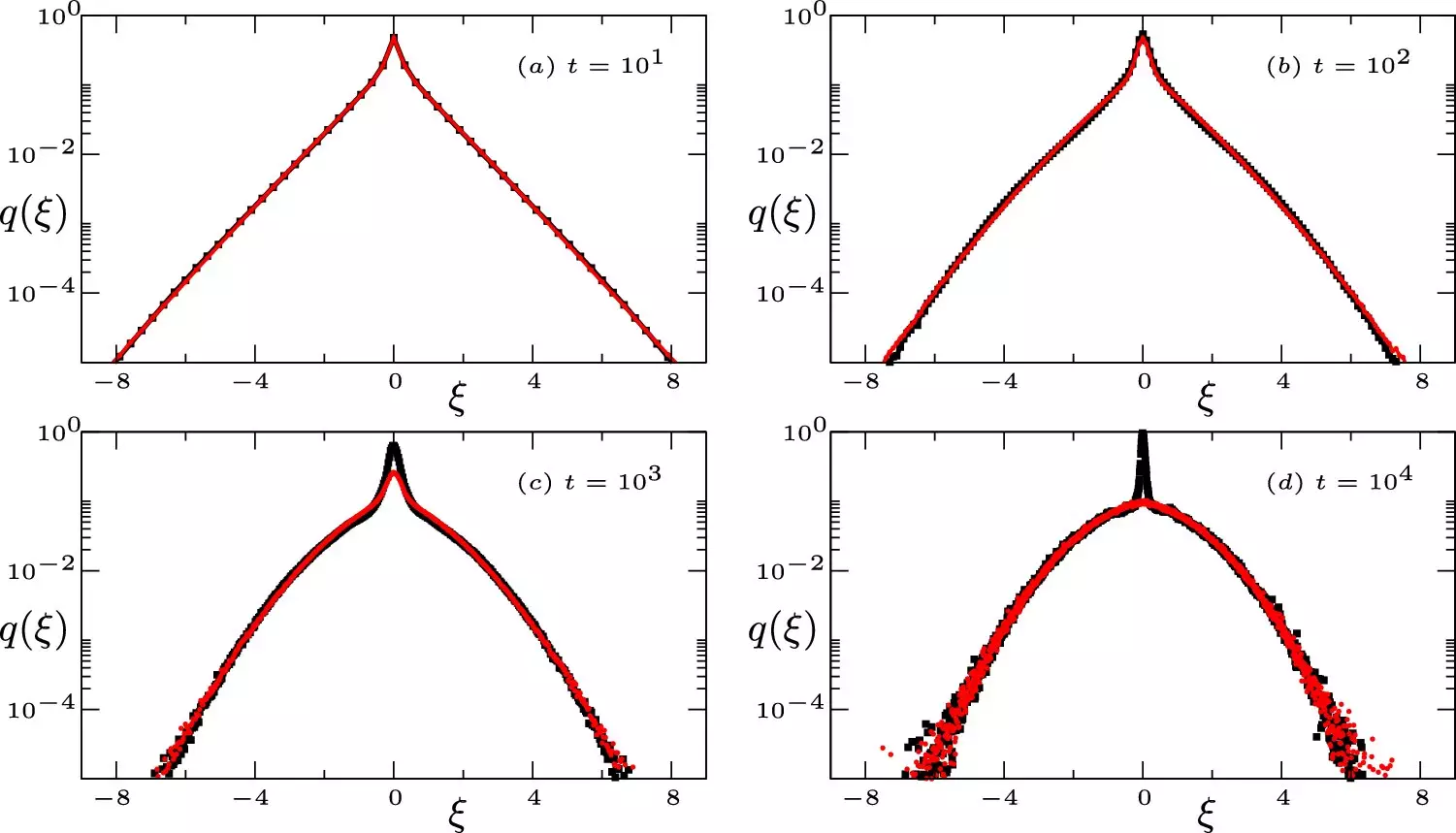Particle diffusion is a fundamental phenomenon in physics, and recent experiments have revealed peculiar patterns that suggest a deeper complexity in the process. This article explores the analysis conducted by Adrian Pacheco-Pozo and Igor Sokolov from the Humboldt University of Berlin, which sheds light on the emergence of these patterns and their implications for understanding the behavior of fluids.
Diffusion typically occurs through random fluctuations in particle positions, known as Brownian motion. This behavior can be mathematically represented by a normal distribution, depicting the probability of finding a particle at a given displacement from its starting position. However, the experiments revealed instances where the distribution exhibited a sharp peak at its center, defying the expectations of a smooth curve over time.
Pacheco-Pozo and Sokolov delved into the mathematical concepts of “continuous-time random walk” models to understand the persistent central peak in the distribution. These models involve particles waiting for varying amounts of time before making jumps to new positions, with longer wait times resulting in greater distances traveled. The researchers discovered that strong correlations existed between the displacements of particles following similar trajectories in both time and space, leading to the emergence of the sharp central peak.
Although the continuous-time random walk model provided insights into the peculiar distribution pattern, it did not fully match the observed shape of the peak. This discrepancy suggests the presence of more complex, time-varying connections between particles that need further investigation. Pacheco-Pozo and Sokolov are eager to explore these intricacies in their future studies.
Understanding the underlying complexity of particle diffusion and the emergence of unusual distribution patterns is crucial for developing more accurate models and gaining deeper insights into fluid behavior. The research conducted by Pacheco-Pozo and Sokolov opens up new avenues for exploring time-varying connections between particles, which may uncover novel mechanisms governing diffusion processes.
The analysis of unusual patterns in particle diffusion conducted by Pacheco-Pozo and Sokolov provides valuable insights into the strong correlations between diffusing particles along similar trajectories. This research highlights the need for more comprehensive models that account for the complexities of time-varying connections in order to explain the observed sharp central peak. By delving deeper into the intricacies of particle diffusion, researchers can enhance their understanding of fluid behavior and develop more accurate models in the future.


Leave a Reply